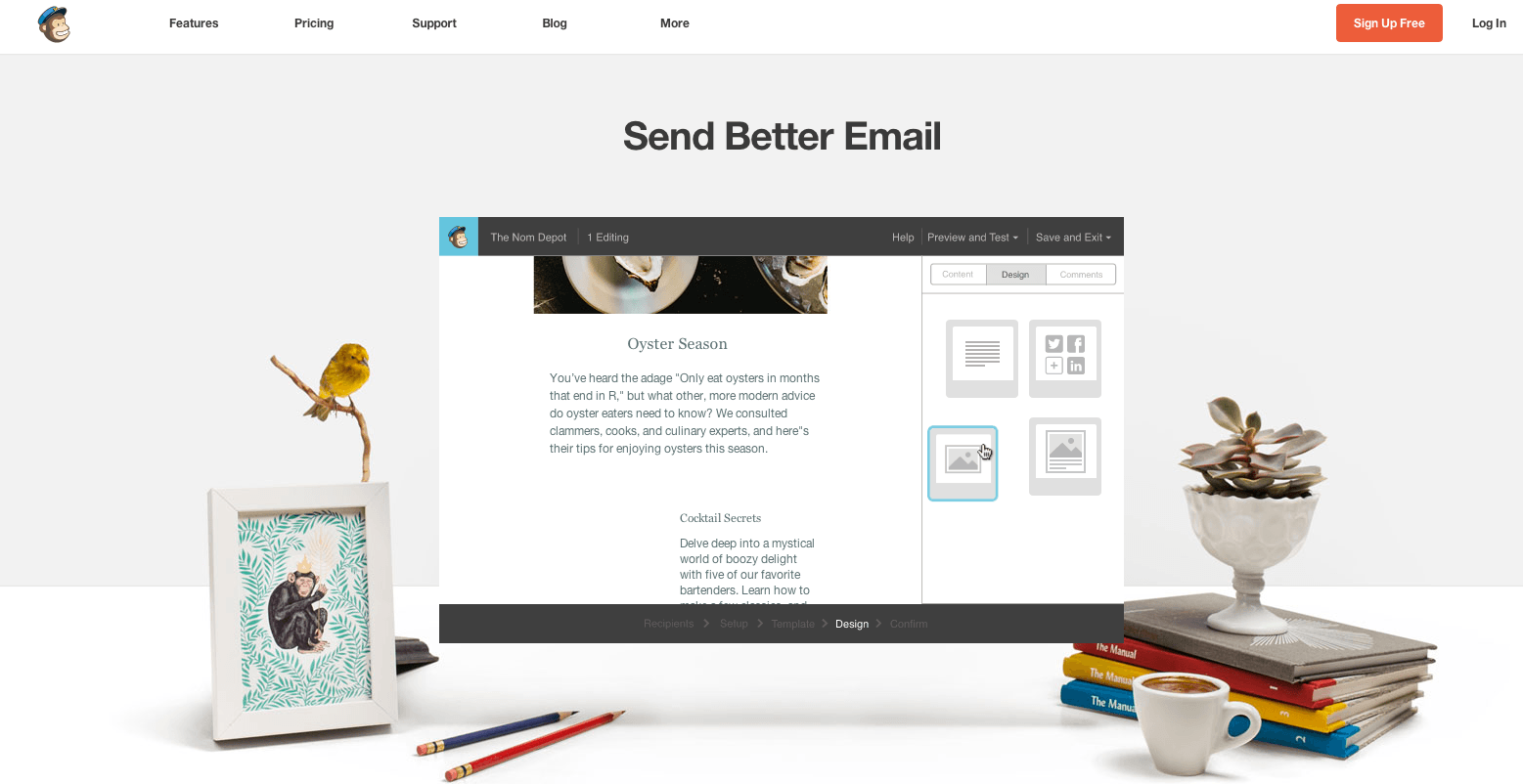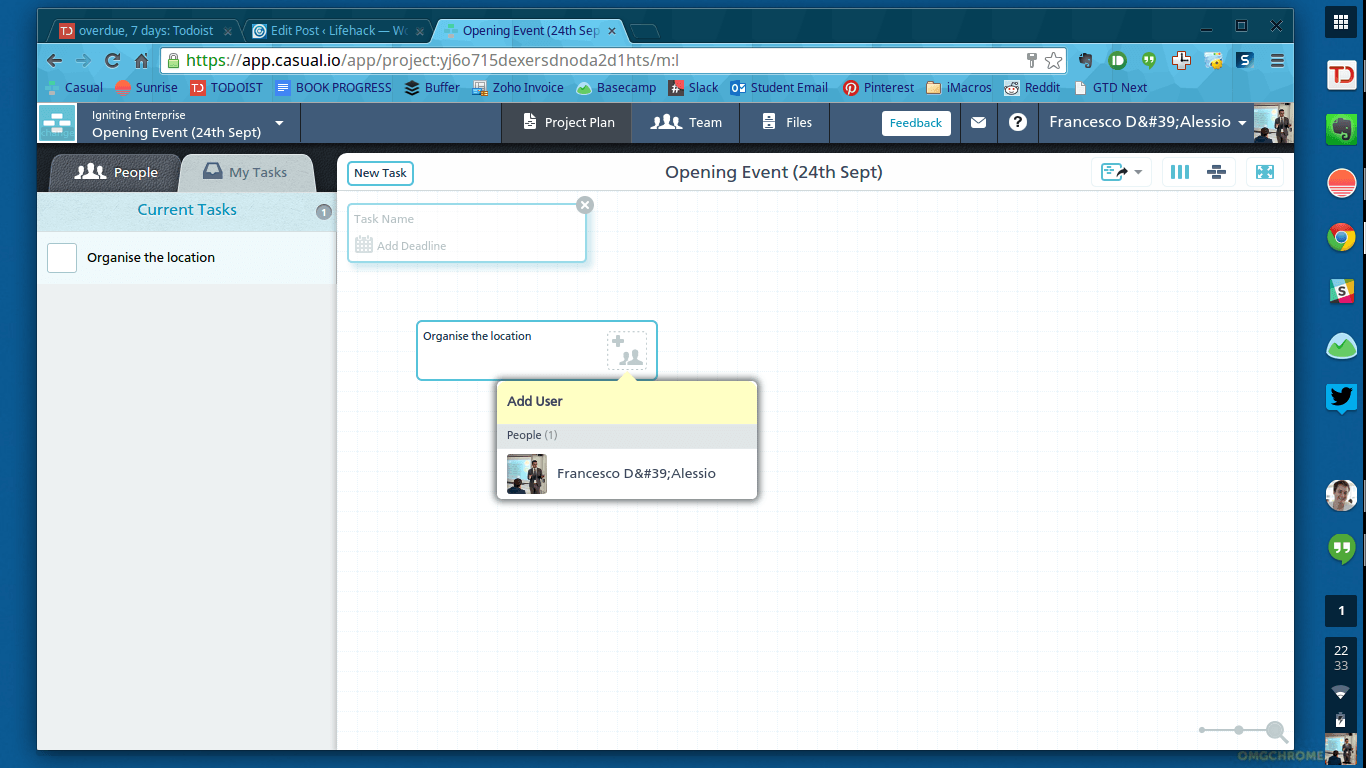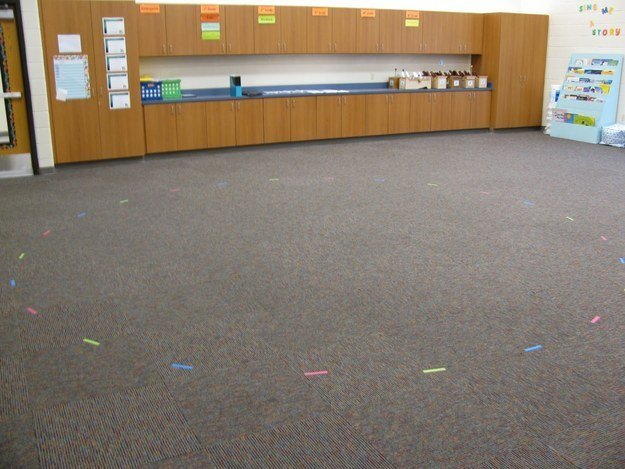1. It’s all in the palms.
One thing that we teach students is body language, and you will be surprised how little tweaks in the way you hold yourself impact you. Your palms can be useful if you direct them towards the people you are talking to. If you keep your hands open with palms down this helps to communicate that you are certain about what you are talking about. You can let your hands speak for you.
2. Get students engaged with technology.
Smartphones and tablets can be useful if used in moderation. We got students engaged with using Google to search for certain things on their smartphones. This went well for the students, as utilizing their web-enabled phones is something that they do in the real world. They need resources at hand, literally. Try starting off with something as simple as suggesting each student research what happened on a particular date. There are many ways to use technology in the classroom, and taking advantage of the technology they have every day (i.e. smartphones) will make a huge impact.
3. Keep your tables relevant to your subject.
You need to keep constant relevance with your work. If you teach science, you need to immerse yourself in science. You need to create table labels with inspirations of that subject. For example, when teacing science you would have famous scientists (Einstein, Newton, Galileo) tables. For business, you would have famous entrepreneurs (Steve Jobs, Richard Branson, Jack Dorsey, James Dyson). This will help motivate the table to work together and be inspired along the way.
4. Always keep time focused, make sure they always see a timer
With tasks you need to replicate the real world. For tasks greater than 10 minutes, add a timer on the board. This will push them to work towards deadlines. Start this from an early age and it will be very effective for their future. When they are in jobs, they will need to be very time focused. Simply type “Timer” into Google and one will pop-up.
5. Rules (hand in the air)
Hands in the air is a fantastic tool for control. This may sound extremely simple, but being able to plaster your room with the rules can be a small gauge that can have massive impact.
6. Use PicMonkey.com to create positive posters
When you assign your students to create a poster or flyer, I would recommend using something a little different that doesn’t limit them. Free tools like PicMonkey can be very effective in coming up with beautiful designs.
7. Engage with your parents through email
Use MailChimp to engage with the parents. MailChimp is a email tool that will allow you to set up a class newsletter. This is a great way to keep updating parents about important dates, homework and details. Many teachers send home notes in folders that can get lost in backpacks, or stuffed in pockets and run through the washer. Ensure the parents get their notes by putting them right in their email inbox.
8. Make a student opportunity board
Organize one side of your wall to be a space for students to collaborate and promote opportunities to each other, like a community board. This will give students the chance to see key opportunities and dates to change their lives. This can also be a great way to engage with motivation posters (if you are so bold).
9. Inspire the entrepreneurs–the sweet sellers
If you find sweets and price tags in a student’s bag, don’t get mad straight away. Instead, call them aside after the lesson and chat with them about how they won’t be able to sell sweets anymore, but they could run a new project/small business of their choice that is within the school boundaries. This will excite them and kick off their entrepreneurial side in a more valuable way.
10. Visualize the mission–use cool software
There are so many great tools out there where you can visualize and map a class’s progress or the tasks over the week. One that I’ve found success with is Casual. It’s a nifty website that will allow you to organize events, dates and more. Try it out; it will impress you and get you organized.
11. Use Evernote + their email feature
Evernote is another one of those cool tools on the web and accessible on smartphones and tablets. Spread the word to your students. This will be a useful center for sending them information to work on and edit right away, like an on-the-go portfolio. See the Emailing guide from Evernote for more information.
12. Use Noisedown app
There is an app called Noisedown that helps monitor the decibels (sound) within the room. If the sound goes over its limit, it will alert the class that the noise is getting too loud and that they should lower the volume. It is very interactive for the students, as it becomes a “mini-mission” for them to work together to keep it below the alert tone. The app is free and easy to download.
13. Velcro on the carpet
I found this tip on BuzzFeed. Velcro on carpets will help to distinguish seating positions, a great and cheap way to keep order. You can also place Velcro on the carpet, have the children stand in a circle, and use different colors to divide the children into groups (all blues together, all greens together, etc.).
14. Start with a joke
To help keep your students engaged, get a book of jokes. Read one aloud to your class every morning, or ask for your students to share their (clean and appropriate) jokes. Start the day with laughter and see the results. Check out these jokes if you need suggestions: http://www.prongo.com/jokes/index.asp.
15. End with a quote
Have a quote book and do the same. This is an awesome way to inspire the students before they head towards home. To get you started, here is a great resource for finding inspirational quotes: http://www.inspirational-quotes.info Featured photo credit: the map/Sylwia Bartyzel via unsplash.imgix.net





